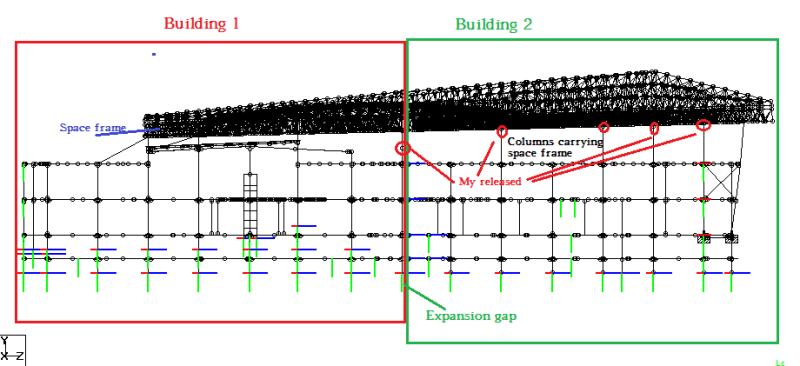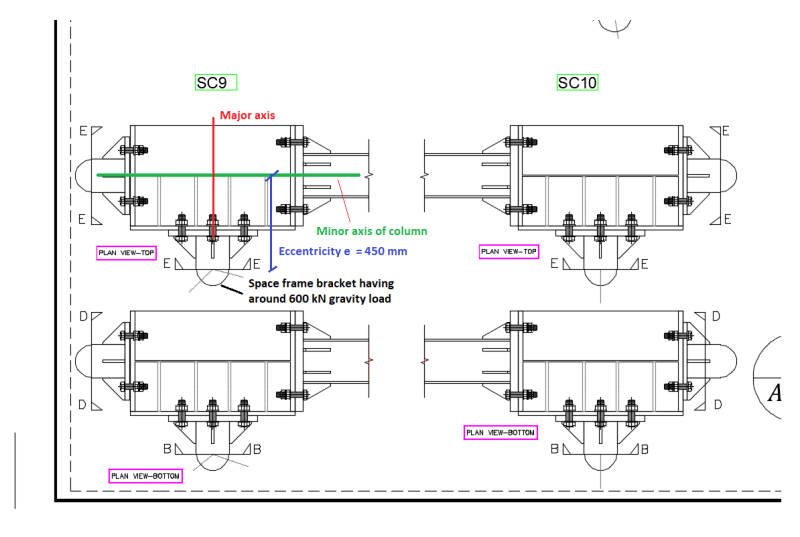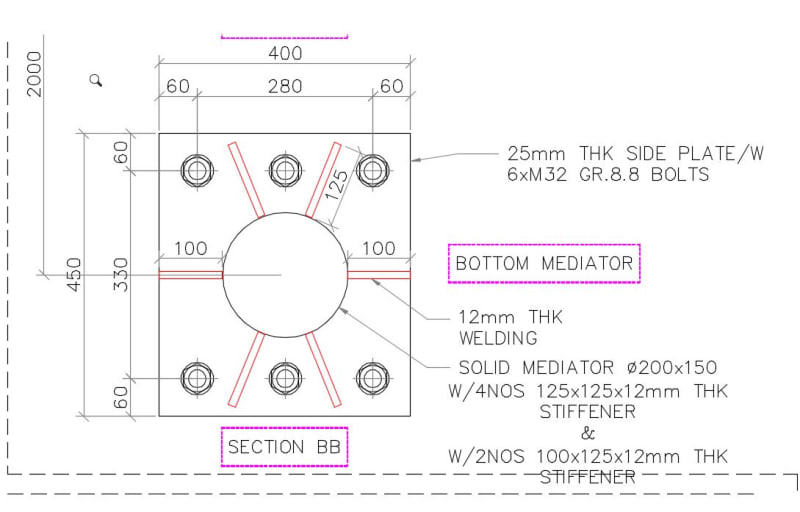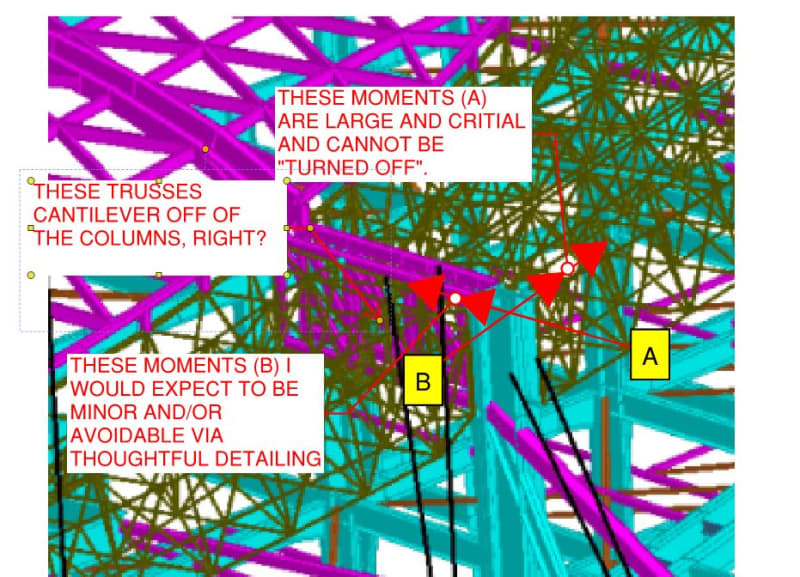Dear All,
I am designing s Space frame which is having an oval shape opening, due to opening space frame is behaving like cantilever. That's why to provide good stability we provided cantilever truss from columns as shown below. The space frame is supported on truss as shown below. Here steel columns are by other steel contractor.
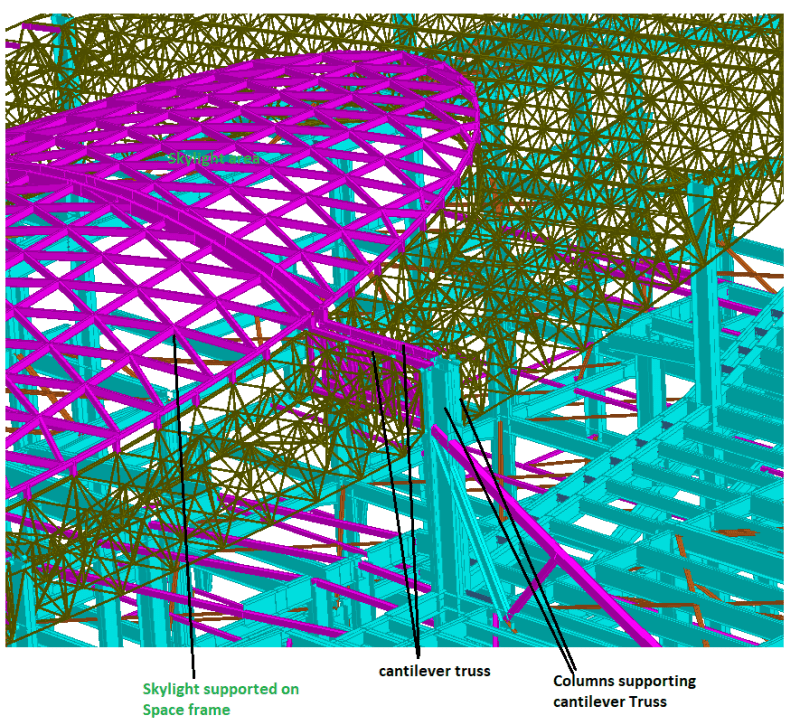
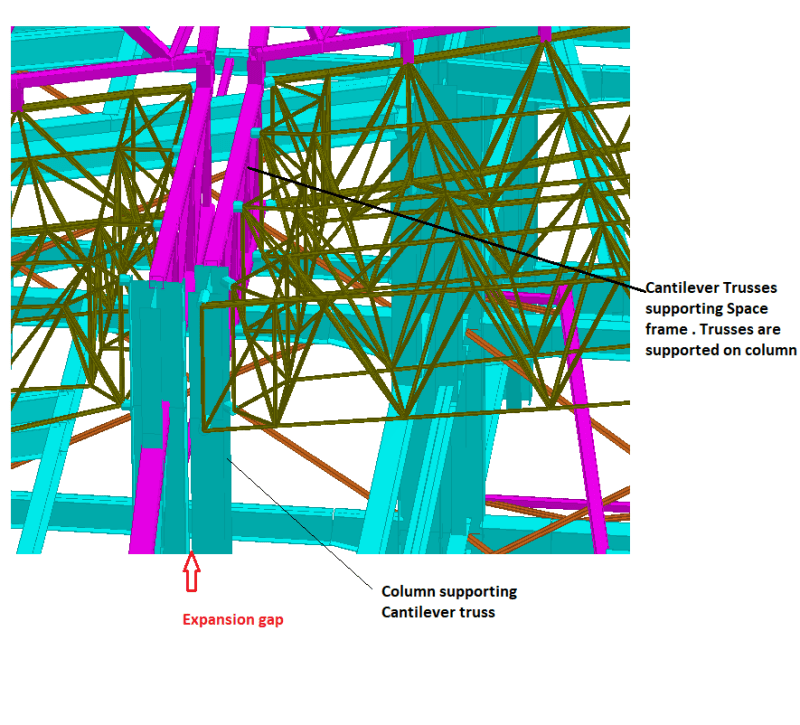
For checking design of our space frame we analysed our space frame model by superimposing on steel column framing model. But we found that there is considerable minor moment (My) on the Columns at the point of connection with truss. But to pass the columns steel contractor has released My moment through full height of column.
when I asked about releasing My then he replied "it has been assumed that lateral loads will be carried by bracing". then I shown him there is no bracing along minor axis, then how lateral load will transfer to the lower level without generating bending My in the column.
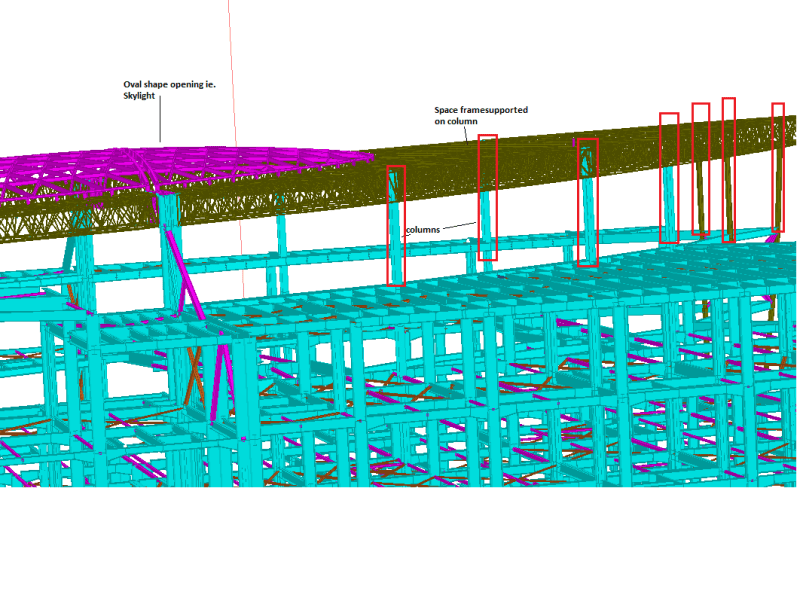
Might be is trying to considered stiffness of our space frame in carrying lateral loads.
My doubts are
1. Is this practice is safe?
2. as the column is continuous (without any splice or pin at location of release) there will be some My in column but actually he is wrongly modelling the release
3. Apart from lateral loads if u see the connection of space frame and column there is a eccentricity of 400-450 mm, and this will create minor axis bending moment in column due to gravity load. how this My will be carried or transferred.
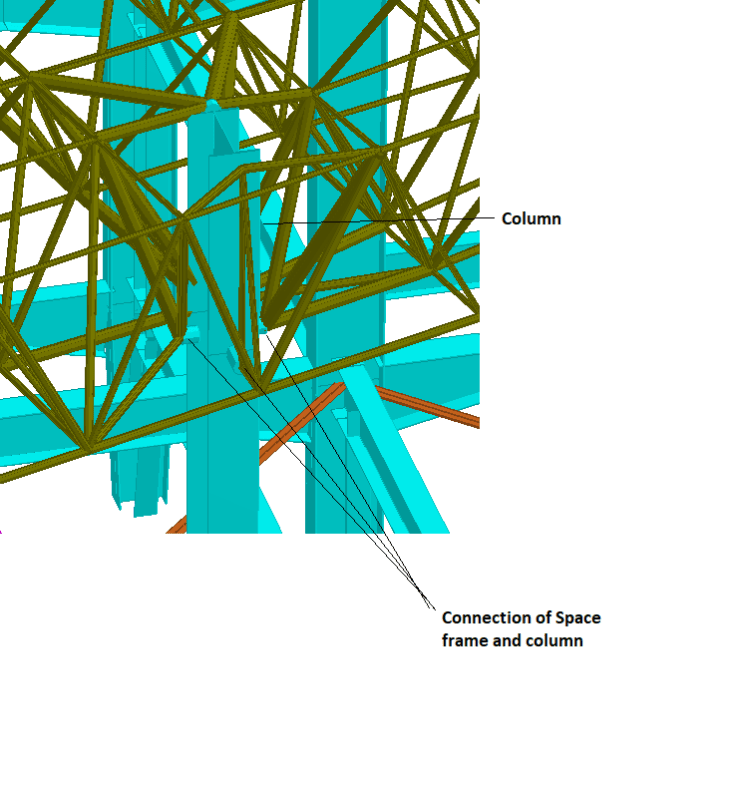
I am designing s Space frame which is having an oval shape opening, due to opening space frame is behaving like cantilever. That's why to provide good stability we provided cantilever truss from columns as shown below. The space frame is supported on truss as shown below. Here steel columns are by other steel contractor.


For checking design of our space frame we analysed our space frame model by superimposing on steel column framing model. But we found that there is considerable minor moment (My) on the Columns at the point of connection with truss. But to pass the columns steel contractor has released My moment through full height of column.
when I asked about releasing My then he replied "it has been assumed that lateral loads will be carried by bracing". then I shown him there is no bracing along minor axis, then how lateral load will transfer to the lower level without generating bending My in the column.

Might be is trying to considered stiffness of our space frame in carrying lateral loads.
My doubts are
1. Is this practice is safe?
2. as the column is continuous (without any splice or pin at location of release) there will be some My in column but actually he is wrongly modelling the release
3. Apart from lateral loads if u see the connection of space frame and column there is a eccentricity of 400-450 mm, and this will create minor axis bending moment in column due to gravity load. how this My will be carried or transferred.


